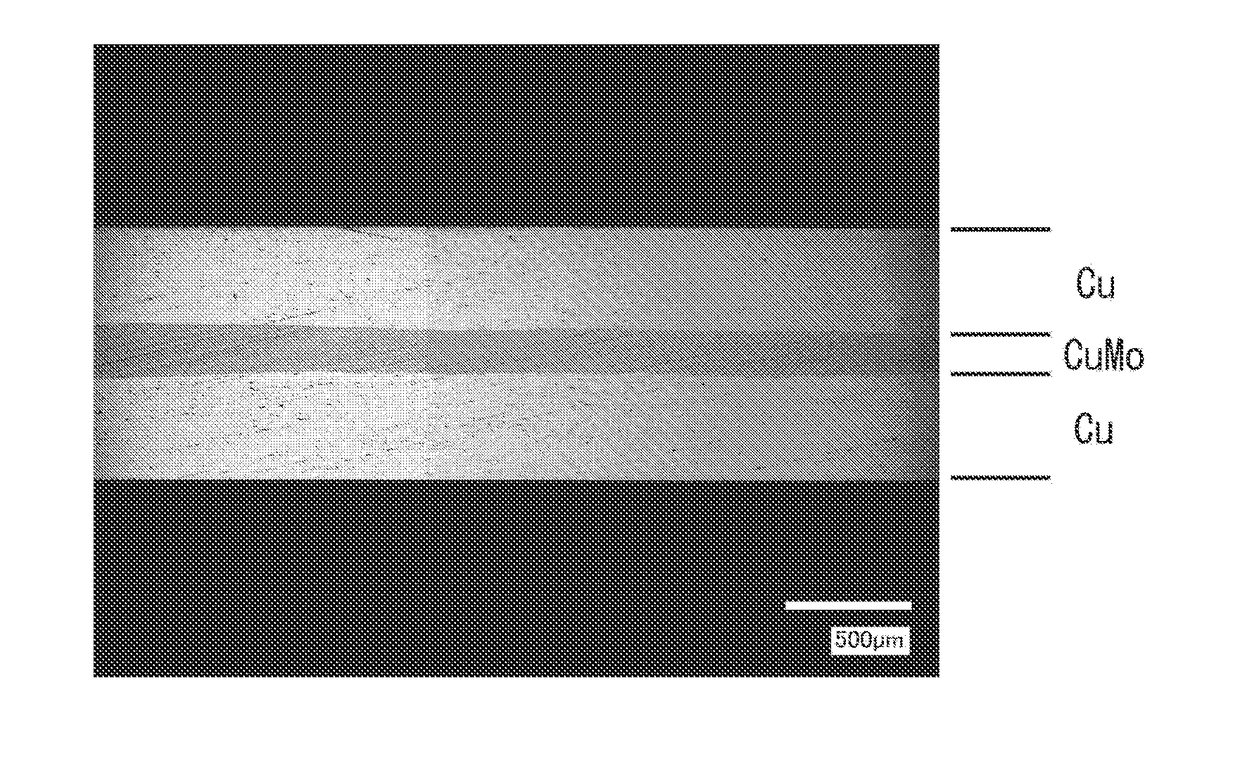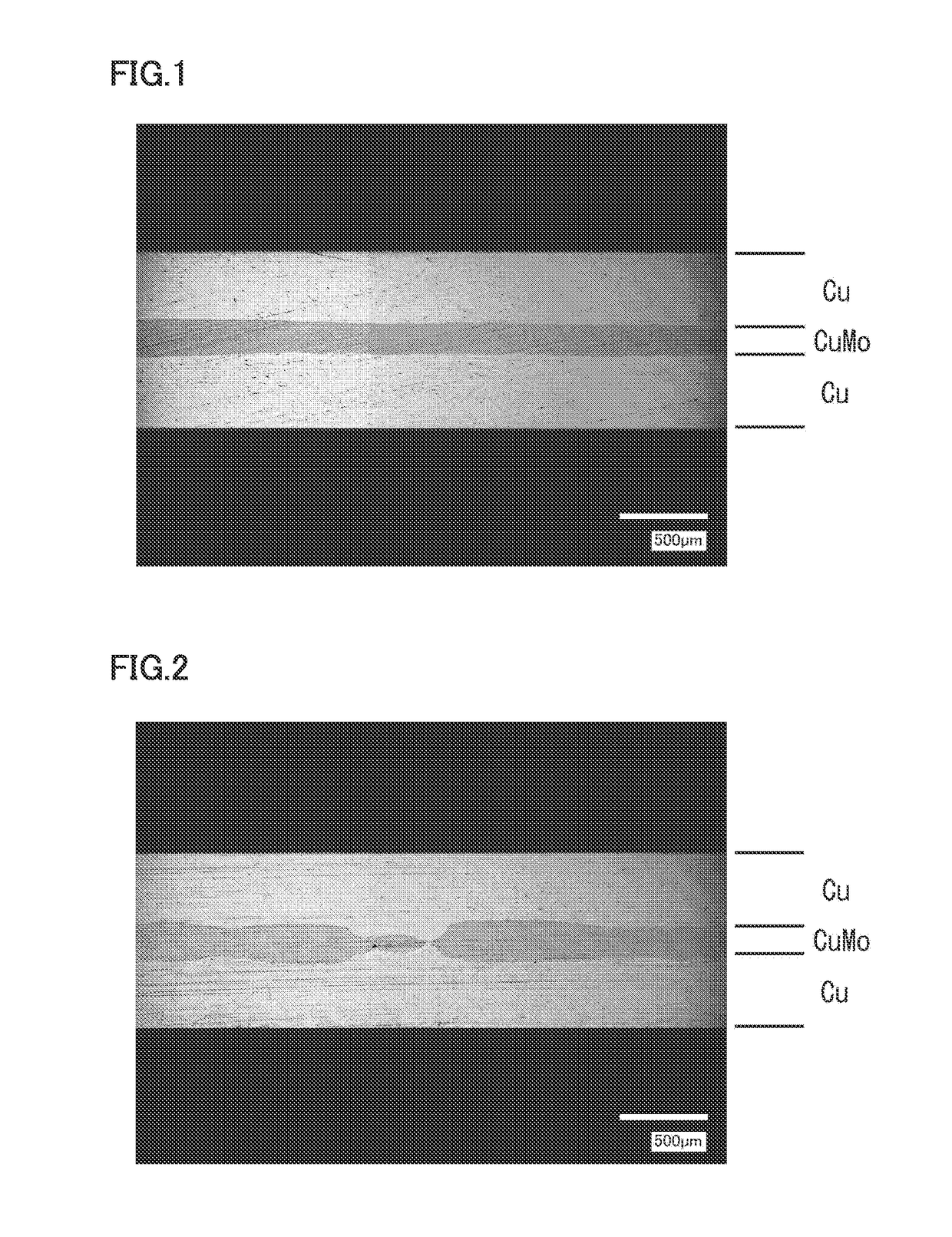Heat spreader and method for manufacturing the same
- Summary
- Abstract
- Description
- Claims
- Application Information
AI Technical Summary
Benefits of technology
Problems solved by technology
Method used
Image
Examples
example 1
[0132](Formation of Porous Body)
[0133]Mo powder having an average particle size measured by the Fisher method of 3.9 μm was press-molded at a molding pressure of 100 MPa using a press machine, to fabricate a molded body in the shape of a plate having dimensions of 143 mm×174 mm×14.3 mm. The molded body had a molding density of 5.2 g / cm3.
[0134]Next, the molded body was sintered in a hydrogen atmosphere at 1000° C. for 1 hour using a firing furnace, to form a porous body. The porous body had an apparent density of 6.6 g / cm3 and a porosity of 35.3% by volume.
[0135](Fabrication of Cu—Mo Composite Body by Infiltrating Cu)
[0136]A Cu plate having a purity of 99.96% was placed on the above porous body, and they were heated in a hydrogen atmosphere at 1400° C. for 1 hour using the firing furnace, to infiltrate Cu into the porous body. Thereafter, extra Cu remaining on the surface of the porous body and the like was removed, to fabricate a Cu—Mo composite body having dimensions of 165 mm×131 ...
examples 9 and 10
[0156]Each heat spreader was manufactured as in Example 1, except for setting the total thickness of the stacked body including a Cu—Mo layer and two Cu layers and the total rolling reduction in the hot rolling and the cold rolling to values shown in Table 1.
examples 19 to 22
[0158]Each heat spreader was manufactured as in Example 1, except for using a Cu—Mo composite material having a ratio of Cu shown in Table 2.
PUM
| Property | Measurement | Unit |
|---|---|---|
| Length | aaaaa | aaaaa |
| Length | aaaaa | aaaaa |
| Length | aaaaa | aaaaa |
Abstract
Description
Claims
Application Information
 Login to View More
Login to View More - R&D
- Intellectual Property
- Life Sciences
- Materials
- Tech Scout
- Unparalleled Data Quality
- Higher Quality Content
- 60% Fewer Hallucinations
Browse by: Latest US Patents, China's latest patents, Technical Efficacy Thesaurus, Application Domain, Technology Topic, Popular Technical Reports.
© 2025 PatSnap. All rights reserved.Legal|Privacy policy|Modern Slavery Act Transparency Statement|Sitemap|About US| Contact US: help@patsnap.com


